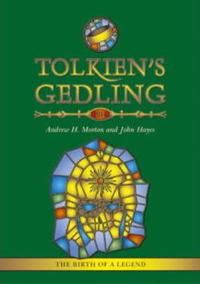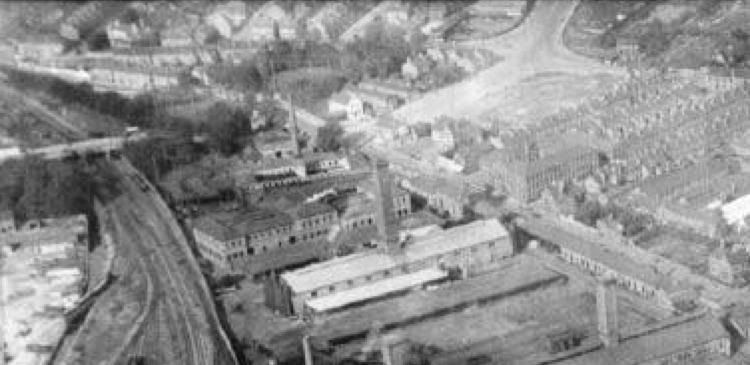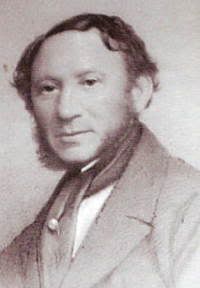-
Content Count
14,713 -
Joined
-
Last visited
-
Days Won
208
Content Type
Profiles
Forums
Calendar
Posts posted by Cliff Ton
-
-
Also didn't "Hounds Gate" use to run right up to the castle before it was cut by "Maid Marrian Way".
Yes it did and still does. Hounds Gate exists in two halves; the one from St Peter's Square up to Maid Marian Way, then the other half from MMW up to Castle Road. (And Castle Gate does the same thing)
A brilliant demonstration of the vandalism of the 60s
-
People of a certain age might remember these

Used to take the money to school every week and accumulate the stamps on a card until you had 15.
-
Take a look at this thread http://nottstalgia.c...topic=8595&st=0 and start at about post number 20.
It might answer some of your questions
-
Did anyone collect silver paper? Cigarette packet liners, milk bottle tops etc. I think it was given to the RNIB.
Now you mention it, I remember that. Didn't do it as an individual thing, I think we actually took it to school and it was all collected there
-
-
That's the picture I was thinking of

Pic the Past have a few shots slightly further up the road, showing the pre-Carrington Street entrance
http://www.pictureth...018346&prevUrl=
-
I see that Alf Bowley former Divisional Commander of Nottingham, has recently published the low down on the Popkess affair via the Thoroton Society, but I am unable to find it in detail on Google?
This can be seen in the Local Studies Library in town. I know because I've now been there and read it. I didn't attempt to memorise it and reproduce it here because it runs to about 15 pages and goes into quite a lot of detail. I don't know if the Thorotons ever put their material online, so going to the library may be the only way you'd get to know.
And it only covers the "Popkess Affair"; it doesn't give much other information about him or his life
-
The modern frontage on Carrington Street with clock tower, street level booking hall etc and new platforms etc which remains virtually the same was built 1903/1904 and opened Jan 17th 1904.
And don't forget that prior to the modern frontage, the entrance to the station was down the side on Station Street, roughly opposite where the Capitol One building is now.
-
Just come across this book - published a couple of years ago - and it doesn't seem to have been mentioned in Nottstalgia which is a bit surprising. Seems there's a link between JRR Tolkien (the guy who wrote Lord of the Rings) and Gedling.

A quick summary..........
Tolkien was born in 1892, and for most of his younger days lived in the Birmingham area. Several times in the early 1900s he visited his aunt, Jean Neave, who lived at Phoenix Farm, Arnold Lane, Gedling, which was roughly opposite the church, where Jessops Lane joins Arnold Lane.

On his visits he'd help on the farm and wander round the local countryside. The farm was demolished in 1954, but its name survives in the nearby Phoenix Farm Estate. On one of his trips to Gedling, Tolkien composed a poem called "The Voyage of Earendel the Evening Star" which Tolkien-ists now reckon was the start of his writings about Hobbits and Pixies and mythological worlds.
His aunt Jean was a very strong, influential personality, and researchers believe she was the inspiration for Gandalf; and it was the walks around the fields and lanes of Gedling/Lambley which sparked Tolkien to create places like Mordor, Middle Earth, Esgaroth and Rivendell. So there's a possibility that Hobbits and Elves were based on the locals of Gedling in the 1920s.
Phoenix Farm was very close to where the Grey Goose used to be. The pub wasn't built when Tolkien was around, but the idea of Bilbo Baggins and Gollum staggering out of the Grey Goose is interesting.
The book is only about 70 pages long. Even if Tolkien and pixies aren't your thing it's interesting because it contains a lot of photos of Gedling in the first half of the 20th century.
You can buy it through Amazon, but I've also seen it in WHS Vic Centre if you just want to flick through
-
 1
1
-
-
How it looked in the early 70s.

-
 1
1
-
-
but does anyone have any recollection of Anne Aston which was on the parade of shops opposite the clock tower side of the Vic Centre. Her boutique was upstairs and had lots of glass panels.
Does that name have any connection with Anne Aston who used to be one of the hostesses on 'The Golden Shot"? She was famously the one who couldn't add up the scores
-
When did Birdcage first open? I'd guess some time around 67 or 68.
What I remember is that it was the first shop I knew in Nottingham which used the word "Boutique" to describe itself. Until then, that was a word which was only used in places like Carnaby Street or King's Road
-
To prove there were other gasometers as well as those at Basford, here's one at the end of Triumph Road.
It's actually meant to be a photo of Radford Station, with the entrance building on the bridge at Ilkeston Road. The gasometer just happened to be in the background.

-
Do it from the comfort of your living room
-
I've looked at lots of them, and they are indeed just the names of people who could vote - which at that time was age 21. They can be useful but they can also be frustrating. So there are no kids........
-
go out searching for the dead carcasses of fireworks the next day.
I used to do that, but only for dead rockets. They were slightly glamorous compared to the other stuff.
And I also used to collect Banger Caps - small plastic red things which went on the fuse end of a banger when you got it from a shop
-
I wonder if anyone can "enhance" the photo?
Slightly......

-
As far as I can work out, it seems to come straight down a high pressure pipe, and they don't need to store it the way they used to.
Maybe someone who speaks scientific can explain it a bit better.
-
I would've said 1920s for the photo. Trams finished in Nottingham in 1936 so it obviously can't be after that, and the ringroad was being built by the early 30s.
And here's another I'd not come across before, and they seem quite specific about its date which might help some of the other queries
-
Could be that the map is wrong as the picture below clearly shows rails going up Church Street Bridge. The picture also shows the gasometers either side of Vernon Road and the sign 'Valley Road' on the wall opposite from the cameraman. Surely this means that Valley Road was in place way before Western Boulevard.
I think your right that the map isn't too accurate. Looking at some of the other larger-scale maps of that area on Old Maps, none of them ever show tram lines going into Basford..... as if it just didn't happen and nobody ever needed to go to Basford

As for the Valley Road sign, I wonder if maybe Fairfax Street had its name changed before the ringroad appeared. To add to the confusion, there is one of the old maps which shows it still called Fairfax Street after the ringroad existed.
Don't believe anything you ever see...
(And I'll second the fact that it's a great photo)
-
Looks like you couldn't move for the things in Basford in the 1920s

-

That name rang a bell, and here is Mr Lewis Heymann

Apparently came from Germany in the 1830s; became very successful in the Lace Industry in Nottingham; lived at Bridgford Hall (which still exists); was a local councillor, and was Mayor for one year.
-
The original of this was across two pages, hence the dark bit in the middle.
This stretch of the ring road is obviously just being finished

And this is probably only a few months later
-
 1
1
-
 2
2
-
-
This is from over 12 years ago, but it seems to answer some of your questions. I hadn't realised they'd all disappeared but now you mention it........
-
 1
1
-




Ugly building
in General Chat about Nottingham
Posted
This one?
http://nottstalgia.c...re&fromsearch=1